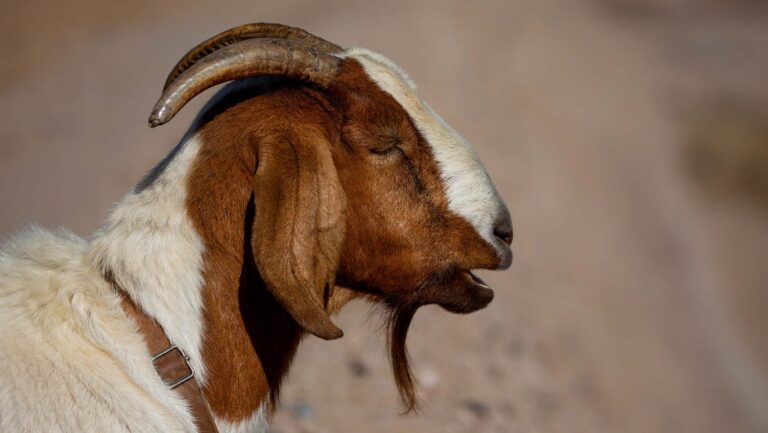Photo: In a water recharge basin southeast of Phoenix, a herd of 70 goats is going deep in the weeds to clear unwanted weeds and grass.
In an overgrown and dried-up basin outside Sun Tan Valley, ringing bells and the occasional cacophony of goat bleats have replaced the sound of water flowing into the area.
The source of the sound is a herd of 70 goats that have taken up residence, munching away at the dense vegetation with an appetite and a purpose: protect critical water infrastructure.
The Central Arizona Water Conservation District — the agency that delivers Colorado River water to Phoenix and Tucson through the Central Arizona Project Canal — usually fills its Superstition Mountains recharge basins with excess water for future use. But over the past few months, the district has flooded one basin with goats.
Since CAP reduced water pumping over the last two years amid drought restrictions, a thicket of vegetation had taken over the two 20-acre basins. Bermuda grass, salt cedar, creosote bush and small mesquites have moved in, choking water infiltration.
When water flows into the basins, it typically absorbs steadily through the soil into the aquifer below. More recently, the water has pooled across the entirety of the basins, the infiltration rate slowed because of the grasses and trees poking out of the water.
“When the basins get inundated with vegetation, it limits the amount of water we can infiltrate into the ground,” said Phillip Pagels, a water transmission supervisor for CAP.
The second basin had a similar weed infestation, until CAP hired the herd of goats to unleash their hardy hunger.
The foragers have feasted on the overgrowth since October, clearing most of the vegetation to reveal the rocky soil ideal for absorbing surplus allowances from the Colorado River into the aquifer.
CAP officials are happy with the results so far. Removing the vegetation will improve absorption rates, allowing faster drainage.
“Rather than mechanically coming in, which isn’t perfect and is expensive, or spraying, which wouldn’t be something you want to do in a recharge basin, this was our innovative solution to weed control,” said DeEtte Person, a communications strategist at CAP.
Managers plan to relocate the goats to the untreated basin in January and hope to continue this unique land management technique in the five other recharge basins across the state with similar vegetation problems.
How do recharge basins work?
Arizona could not store its surplus water allowance from the Colorado River before the recharge basins were added to the system. The CAP had to leave excess water in the river, meaning the state did not receive all the water it was entitled to annually.
In 1996, CAP began recharging water to ensure Arizona could access its entire allowance and plan for future shortages.
Recharge is a water management technique that stores water underground. Water is pumped from the CAP canals into […]
Full article: www.azcentral.com

